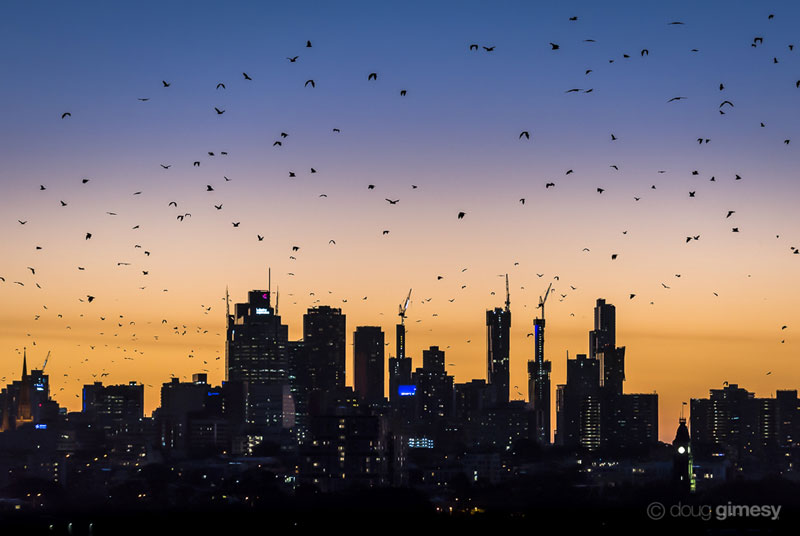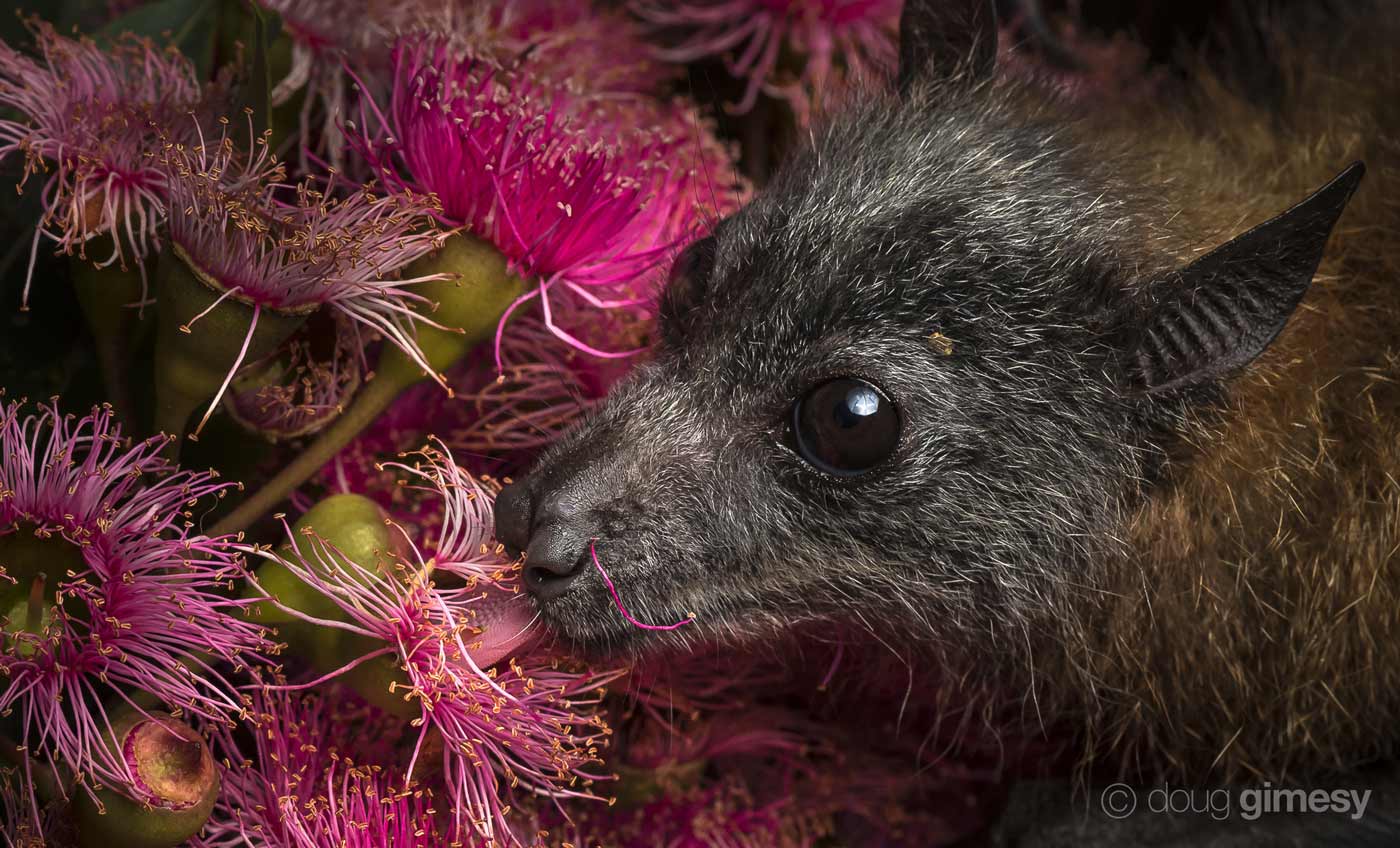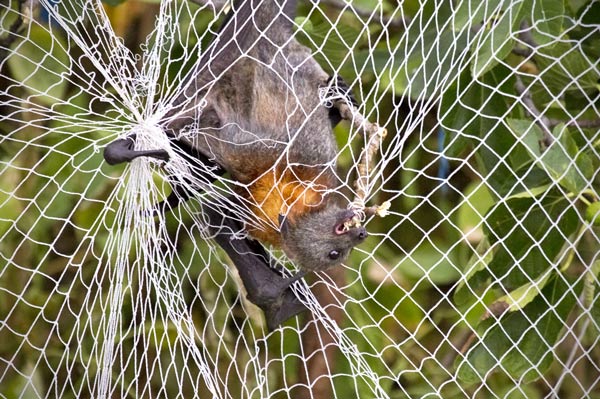Header image: Doug Gimesy
Maybe you’ve heard them squeaking from a suburban gum tree late at night, or maybe you’ve glanced up at sunset and seen them dotting the skyline, heading out to feed on nectar, blossoms and fruit.
Every night, Melbourne’s grey-headed flying foxes head out from the safety of Yarra Bend Park, where they spend the day suspended upside-down, napping and socialising. If you take a trip to the Bellbird picnic area you’ll be treated to a spectacle, a great flapping cacophony of life. Yet appearances can be deceiving.

Flying foxes dot the Melbourne skyline as they head out to feed each evening.
Their population is a fraction of what it once was, and grey-headed flying foxes are now a threatened species.
Huge numbers have been shot by fruit farmers (despite the existence of affordable and humane alternatives) and their habitat is still being destroyed, especially in in New South Wales and Queensland. They also face new threats in their travels through our expanding city, where they become entangled in power lines, barbed wire and netting on backyard fruit trees.
Among all these threats, the bushland at Yarra Bend provides a crucial safe haven. But our outdated and ineffective laws mean these furry critters aren’t getting the protection they need.

Flying foxes play an important role in pollinating gum trees and spreading native seeds.
Back in 2003, flying foxes were listed as a threatened species under Victoria’s Flora and Fauna Guarantee Act (1988), but sixteen years later, there is still no action plan for their protection. Sadly this is not an uncommon story. Action statements on how a species will be brought back from decline are supposed to be a requirement under the FFG Act, but less than half of the plants and animals listed have plans. Some of those are decades old but haven’t been implemented.
While the destruction of any plant or animal species is a tragedy, the extinction of grey-headed flying foxes would have far-reaching impacts.
Many plants rely on flying foxes for their survival. In a single night, a flying fox can travel up to 100 kilometres, pollinating trees and spreading seeds as it goes. A single flying fox can disperse up to 60,000 seeds in one night! This is a creature we simply must protect.
Recently the Andrews state government reviewed the FFG Act, with changes currently before parliament. The bill does have some improvements, but falls a long way short of what we need to reverse the extinction crisis, and ensure Victoria’s rare and threatened plants and animals can recover and thrive. You can read more about the changes here.
Environment Victoria, along with our friends at Environmental Justice Australia, the Wilderness Society and the Victorian National Parks Association have been working hard to fix Victoria’s threatened species protections, and will continue to do so.
Let’s hope that the next time you hear the tell-tale squeak and rustling of a grey-headed flying fox doing its rounds, you can smile, knowing it has the protection it needs.
Together we can make sure that these intelligent, charismatic animals continue pollinating trees, spreading seeds and helping our native bush to flourish.
